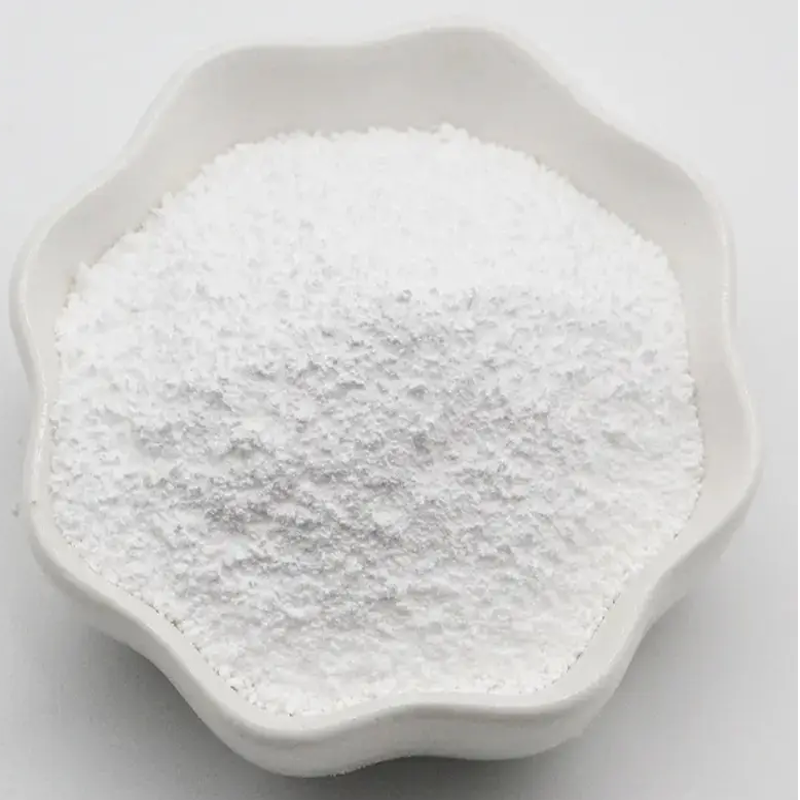-
Categories
-
Pharmaceutical Intermediates
-
Active Pharmaceutical Ingredients
-
Food Additives
- Industrial Coatings
- Agrochemicals
- Dyes and Pigments
- Surfactant
- Flavors and Fragrances
- Chemical Reagents
- Catalyst and Auxiliary
- Natural Products
- Inorganic Chemistry
-
Organic Chemistry
-
Biochemical Engineering
- Analytical Chemistry
- Cosmetic Ingredient
-
Pharmaceutical Intermediates
Promotion
ECHEMI Mall
Wholesale
Weekly Price
Exhibition
News
-
Trade Service
Yimaitong compiles and organizes, please do not reprint without authorization.
Soft tissue infection is still a common clinical problem, which can lead to prolonged hospital stays, disability and death.
For more serious infections, active surgical treatment combined with antibiotic treatment is required.
In February 2021, the Society of Infectious Surgery (SIS) updated and issued a guideline for the management of complex skin and soft tissue infections, which is an update of the 2009 version of the guideline.
Regarding necrotizing skin and soft tissue infections and specific treatments for pathogens, the guidelines mainly put forward the following recommendations.
Diagnosis of necrotizing skin and soft tissue infections (NSTIs) ➤ Necrotizing fasciitis laboratory examination risk index score (LRINEC) at high risk can be considered as a sign of prolonged hospital stay.
[2C]➤ Plain X-ray film is the first-line method to find gas in soft tissues, followed by CT examination, and magnetic resonance examination has no effect.
[1C]➤Ficolin-2 (Ficolin-2) level <1.
9 mcg/ml can be used as an independent risk factor for increased mortality in the short term (28 days).
[1C] ➤Penetrin-3 (PTX-3) levels higher than 3.
5 ng/mL are associated with increased morbidity and mortality in NSTI patients, but it is not an independent risk factor.
[1C] Surgical treatment ➤ It is recommended to perform adequate initial surgical debridement of the affected tissue to improve the prognosis of NSTIs.
[1C]➤ It is recommended to reassess or return to the operating room several times within 24 hours to ensure the adequacy of the initial debridement and no further tissue necrosis.
[1C] ➤For necrotizing fasciitis cases with high independent risk factors for death (including hemorrhagic bullae, peripheral vascular disease, bacteremia, and blood>8), early amputation should be considered.
[2C]➤Negative pressure therapy should be considered after adequate surgical debridement to promote wound healing.
[2C] Antibiotic therapy ➤ It is recommended to apply broad-spectrum empirical antimicrobial therapy covering Gram-positive and Gram-negative (aerobic or anaerobic) microorganisms.
[1C]➤ If proper coverage of related pathogens can be ensured, a combination of multiple drugs may be equally effective in the treatment of NSTIs.
[2C]➤ Local resistance patterns should guide the choice of empirical antimicrobial treatment coverage.
[1B] ➤For rapidly progressive infections or severe infections caused by toxin-producing organisms, if the pathogen is sensitive to protein synthesis inhibitors clindamycin or linezolid, combination therapy should be considered.
[1C] ➤ After identifying the pathogen through microbial culture or rapid diagnosis, treatment for the pathogen should be considered.
[1C]➤Short course of antibiotic therapy (<7d) seems to be equivalent to long course of treatment and should be considered.
[2B] Pathogen-specific treatment of staphylococcal toxic shock syndrome ➤Due to the rapid spread of the disease, empirical treatment of Staphylococcus aureus should be carried out as soon as possible.
[1C]➤The choice of drugs should be based on the possibility of methicillin-resistant strains.
[1C] Consider treatment with protein synthesis inhibitors.
[1C] Group A streptococcal infection ➤ It is recommended that early active antibiotic treatment and surgical debridement be carried out.
[1C] ➤For moderate to severe infections, parenteral penicillin is recommended.
[1C]➤For severe cases, the use of β-lactam drugs alone may lead to treatment failure.
[1C]➤In severe cases, it is recommended to use protein synthesis inhibitors alone or in combination with cell wall active drugs; such as clindamycin or a macrolide drug.
[1C]➤ The increased resistance of streptococci to macrolides raises concerns about the use of these drugs.
[1C] ➤For patients with toxic shock syndrome (TSS) from streptococcal SSTIs, intravenous immunoglobulin (IVIG) is recommended.
[1C] Clostridium infection ➤It is recommended to actively carry out antibiotic treatment and surgical debridement at an early stage.
[1C] Multiple and repeated surgical inspections and debridement are recommended.
[1C] ➤Although carbapenems show good activity in vitro, high-dose parenteral PCN (24 million U/d) treatment is still recommended.
[1C]➤Considering that the use of β-lactam drugs alone in severe cases may lead to treatment failure, it is recommended to use protein synthesis inhibitory antibiotics.
[2C] Vibrio infection ➤ It is recommended to actively carry out antibiotic treatment and surgical debridement at an early stage.
[1C] Multiple and repeated surgical inspections and debridement are recommended.
[1C]➤For severe infections, it is recommended to use cell wall active drugs in combination with tetracycline or minocycline.
[2C]➤Cefotaxime and tetracycline or minocycline are recommended based on preclinical studies.
[2C] Community-related methicillin-resistant Staphylococcus aureus (CA-MRSA) infection ➤ Unlike hospital-related MRSA (HA-MRSA), the CA-MRSA strain is sensitive to many non-lactam antibiotics.
In emergency departments in different regions, CA-MRSA is also the most common cause of SSTI.
[1B]➤For severe necrotizing infections associated with CA-MRSA, treatment with protein synthesis inhibitors should be considered.
[1C] Reference source: Therese M Duane, Jared M Huston.
et al.
Surgical Infection Society 2020 Updated Guidelines on the Management of Complicated Skin and Soft Tissue Infections.
Surg Infect (Larchmt).
2021 Feb 26.
doi: 10.
1089/sur.
2020.
436.
Soft tissue infection is still a common clinical problem, which can lead to prolonged hospital stays, disability and death.
For more serious infections, active surgical treatment combined with antibiotic treatment is required.
In February 2021, the Society of Infectious Surgery (SIS) updated and issued a guideline for the management of complex skin and soft tissue infections, which is an update of the 2009 version of the guideline.
Regarding necrotizing skin and soft tissue infections and specific treatments for pathogens, the guidelines mainly put forward the following recommendations.
Diagnosis of necrotizing skin and soft tissue infections (NSTIs) ➤ Necrotizing fasciitis laboratory examination risk index score (LRINEC) at high risk can be considered as a sign of prolonged hospital stay.
[2C]➤ Plain X-ray film is the first-line method to find gas in soft tissues, followed by CT examination, and magnetic resonance examination has no effect.
[1C]➤Ficolin-2 (Ficolin-2) level <1.
9 mcg/ml can be used as an independent risk factor for increased mortality in the short term (28 days).
[1C] ➤Penetrin-3 (PTX-3) levels higher than 3.
5 ng/mL are associated with increased morbidity and mortality in NSTI patients, but it is not an independent risk factor.
[1C] Surgical treatment ➤ It is recommended to perform adequate initial surgical debridement of the affected tissue to improve the prognosis of NSTIs.
[1C]➤ It is recommended to reassess or return to the operating room several times within 24 hours to ensure the adequacy of the initial debridement and no further tissue necrosis.
[1C] ➤For necrotizing fasciitis cases with high independent risk factors for death (including hemorrhagic bullae, peripheral vascular disease, bacteremia, and blood>8), early amputation should be considered.
[2C]➤Negative pressure therapy should be considered after adequate surgical debridement to promote wound healing.
[2C] Antibiotic therapy ➤ It is recommended to apply broad-spectrum empirical antimicrobial therapy covering Gram-positive and Gram-negative (aerobic or anaerobic) microorganisms.
[1C]➤ If proper coverage of related pathogens can be ensured, a combination of multiple drugs may be equally effective in the treatment of NSTIs.
[2C]➤ Local resistance patterns should guide the choice of empirical antimicrobial treatment coverage.
[1B] ➤For rapidly progressive infections or severe infections caused by toxin-producing organisms, if the pathogen is sensitive to protein synthesis inhibitors clindamycin or linezolid, combination therapy should be considered.
[1C] ➤ After identifying the pathogen through microbial culture or rapid diagnosis, treatment for the pathogen should be considered.
[1C]➤Short course of antibiotic therapy (<7d) seems to be equivalent to long course of treatment and should be considered.
[2B] Pathogen-specific treatment of staphylococcal toxic shock syndrome ➤Due to the rapid spread of the disease, empirical treatment of Staphylococcus aureus should be carried out as soon as possible.
[1C]➤The choice of drugs should be based on the possibility of methicillin-resistant strains.
[1C] Consider treatment with protein synthesis inhibitors.
[1C] Group A streptococcal infection ➤ It is recommended that early active antibiotic treatment and surgical debridement be carried out.
[1C] ➤For moderate to severe infections, parenteral penicillin is recommended.
[1C]➤For severe cases, the use of β-lactam drugs alone may lead to treatment failure.
[1C]➤In severe cases, it is recommended to use protein synthesis inhibitors alone or in combination with cell wall active drugs; such as clindamycin or a macrolide drug.
[1C]➤ The increased resistance of streptococci to macrolides raises concerns about the use of these drugs.
[1C] ➤For patients with toxic shock syndrome (TSS) from streptococcal SSTIs, intravenous immunoglobulin (IVIG) is recommended.
[1C] Clostridium infection ➤It is recommended to actively carry out antibiotic treatment and surgical debridement at an early stage.
[1C] Multiple and repeated surgical inspections and debridement are recommended.
[1C] ➤Although carbapenems show good activity in vitro, high-dose parenteral PCN (24 million U/d) treatment is still recommended.
[1C]➤Considering that the use of β-lactam drugs alone in severe cases may lead to treatment failure, it is recommended to use protein synthesis inhibitory antibiotics.
[2C] Vibrio infection ➤ It is recommended to actively carry out antibiotic treatment and surgical debridement at an early stage.
[1C] Multiple and repeated surgical inspections and debridement are recommended.
[1C]➤For severe infections, it is recommended to use cell wall active drugs in combination with tetracycline or minocycline.
[2C]➤Cefotaxime and tetracycline or minocycline are recommended based on preclinical studies.
[2C] Community-related methicillin-resistant Staphylococcus aureus (CA-MRSA) infection ➤ Unlike hospital-related MRSA (HA-MRSA), the CA-MRSA strain is sensitive to many non-lactam antibiotics.
In emergency departments in different regions, CA-MRSA is also the most common cause of SSTI.
[1B]➤For severe necrotizing infections associated with CA-MRSA, treatment with protein synthesis inhibitors should be considered.
[1C] Reference source: Therese M Duane, Jared M Huston.
et al.
Surgical Infection Society 2020 Updated Guidelines on the Management of Complicated Skin and Soft Tissue Infections.
Surg Infect (Larchmt).
2021 Feb 26.
doi: 10.
1089/sur.
2020.
436.







